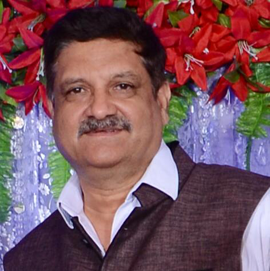Vishal Gupta, Application Engineer, Keysight Technologies India Pvt. Ltd. and Col. Ashok Kumar Kochhar, Business Development Manager, Keysight Technologies India Pvt. Ltd. shares insights on the potential of Indian Aerospace and Defence industry and pointing some challenges..


How do you look at Indian defense industry and what are the major challenges in Indian A&D Industry to meet in-house demands and global expectations. What are the possible solutions to meet these challenges?
Indian Defence Industry has grown substantially over past years. Many developed economies and defence manufacturers eying on Indian defence investments is itself an evidence of its attractiveness. Indian government is promoting indigenization and investing in home grown technologies (LCA, Missile technology, RADAR technology, EW system, Drones, etc.). Large private investment is another proof of domestic demand and its focus on indigenization. Going forward, exports of defence systems and services can be other avenues that will bring in more investment in Indian defence sector.
There are many challenges that India defence industry is facing. Long decision making cycles, delay in Transfer of Technologies (ToT) from developed nations and bureaucratic processes are some of the challenges that slows down the investment in this sector.
Most of the investors and suppliers to defence market are eagerly awaiting the release of new “Defence Procurement Policy (DPP)”.
It is anticipated that India will continue to expand and establish itself as an aerospace engineering center of excellence and an export hub. What will be competition Indian industry will face from other developed countries.
India has already proven itself as a key contributor of aerospace engineering by delivering the world class aerospace technology (successful projects like Chandrayan, Mars Mission and indigenized cryogenic engines). India being among the top six countries leading the aerospace missions globally is a proof of our aerospace engineering excellence. In addition to providing services (broadcast, education, disaster management, remote imaging, navigation, etc.) to large domestic market, ISRO is already exporting technologies to other developing countries and neighboring SAARC nations. India already has very strong collaborations with developed nations like the United States and France for development of aerospace technologies.
So far as aerospace engineering is concerned there are no significant obstacles seen from developed nations as Indian government has strong ties with these nations for research and development of space technologies. However, India is still dependent for certain technologies w.r.t. high end components and high end engineering, test methodologies and instruments which are restricted by the export control of developed nations. Government should develop policies for smooth import of these technologies and at the same time promote indigenization of these in house.
With multiple emerging markets moving forward in the aerospace industry, what do the global players expect from the Indian A&D Industry? What are the reservations from the global players on the potential of the Indian A&D Industry?
There is hardly any doubts on the potential of Indian aerospace and defence industry and its growth in coming years. However, clarity in the procurement process is the key to seek investments from global leaders of aerospace and defence technology.
Few other reservations of global players is protection of Intellectual Property (IP), availability of skilled manpower and infrastructural facilities for manufacturing and smooth transfer of technology. They are also concerned viz. a viz. technical strength and intentions of their Indian partners.
Speedy clearances, continuity of government policies and access to Indian market are other major expectations of Global players. Prior to making any investment decisions global players are looking forward to government’s actions which address their expectations.






